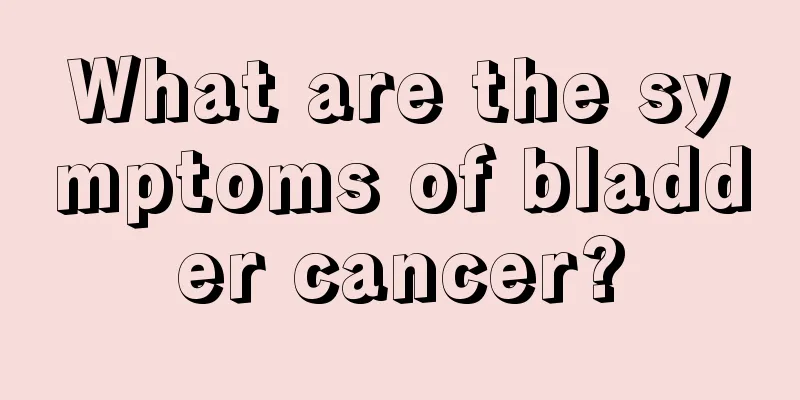How to treat ascites in liver cancer? Three methods to eliminate ascites in liver cancer

|
It is a malignant tumor disease. In the early stage, there are no particularly obvious symptoms. As the disease progresses and worsens, many symptoms begin to emerge. Liver cancer patients do not have ascites in the early stage. As the disease worsens, hepatic ascites will appear. After the onset of hepatic ascites, treatment must be taken immediately. After the onset of hepatic ascites, albumin must be supplemented. At the same time, relevant drainage must be taken to avoid the aggravation of discomfort symptoms. 1. Classification: The overall clinical manifestations can vary greatly depending on the patient's age, the type of lesion, and whether or not there are other lesions such as cirrhosis. Patients can generally be divided into four types: (1) Cirrhosis: The patient originally had symptoms of cirrhosis, but recently developed liver pain, liver enlargement, liver function decline, etc.; or the patient recently developed symptoms similar to cirrhosis such as loss of appetite, anemia, emaciation, ascites, jaundice, etc., but the liver enlargement was not obvious. (2) Liver abscess: The patient has obvious liver enlargement and significant liver pain, which develops rapidly and is accompanied by fever and secondary anemia, which is very similar to a single liver abscess. (3) Liver tumor: This type is more typical. The patient was originally healthy but suddenly developed liver enlargement and other symptoms, which is undoubtedly a malignant tumor. (4) Cancer metastasis: Clinically, there are only manifestations of distant metastasis of the tumor, and the primary lesion is not obvious, so it is impossible to distinguish whether it is liver cancer or other tumors; even if the liver is enlarged, it is often difficult to distinguish whether it is primary or secondary liver cancer. Surgical treatment The traditional treatment method for liver cancer is surgical resection, but not all liver cancer patients are suitable for surgery. Only patients with good cardiopulmonary function, limited liver tumors, and no metastasis are suitable for surgery. In addition, most liver cancer patients in my country have a history of hepatitis and cirrhosis. Clinically, about 80% of patients cannot undergo surgery for various reasons. There are many non-surgical treatment methods for liver cancer, and each treatment method has its own indications. Only the method that suits the patient is the best method. The appropriate treatment method should be selected according to the patient's physical condition, liver function status, and tumor conditions. Interventional treatment is also a commonly used method. So what are the limitations of this method? Liver cancer mainly relies on the hepatic artery for blood supply, but there is portal vein blood supply around the cancer mass, and cancer cells can "survive in peace". Even if the operation is carried out super-selectively, due to reasons such as high-pressure injection, it may cause accidental thrombosis, shunting, and inevitable micro-metastasis; some patients have blood vessels blocked after one treatment, making it difficult to operate again. |
<<: How to prevent primary liver cancer? Key knowledge about primary liver cancer
Recommend
What are the early symptoms of skin cancer?
What are the early symptoms of skin cancer? Many ...
Can roses and wolfberries be soaked in water together?
I am a very particular person. The water I drink ...
What are the symptoms of procrastination?
Procrastination is very common in today's soc...
How to classify gastric cancer at different stages? The classification structure is complicated, please read it
This question can stump many people. Although gas...
Patients with laryngeal cancer should pay attention to postoperative care methods
Surgery for laryngeal cancer is a common treatmen...
What are the nutritional value and effects of wolfberry
Wolfberry is a perennial herb. The whole body of ...
How to maintain breast and vagina
The breasts are an important secondary sexual cha...
How long does it take for bladder cancer to recur after surgery?
How long does it take for bladder cancer to recur...
Symptoms of Kashiwa pneumonia
Many people may not be so clear about the disease...
What are the methods for treating vitiligo
Vitiligo is a skin disease with localized depigme...
How to tell whether honey is real or fake?
As we all know, honey is not only rich in nutrien...
The significance of four blood lipid tests
It is very important to keep blood lipids at norm...
What causes esophageal cancer?
The exact cause of esophageal cancer is still unk...
What is the best way to treat tinea versicolor?
The usual treatment for tinea versicolor is mainl...
The harm of nail glue to the body
Some girls who love beauty often choose to do man...









